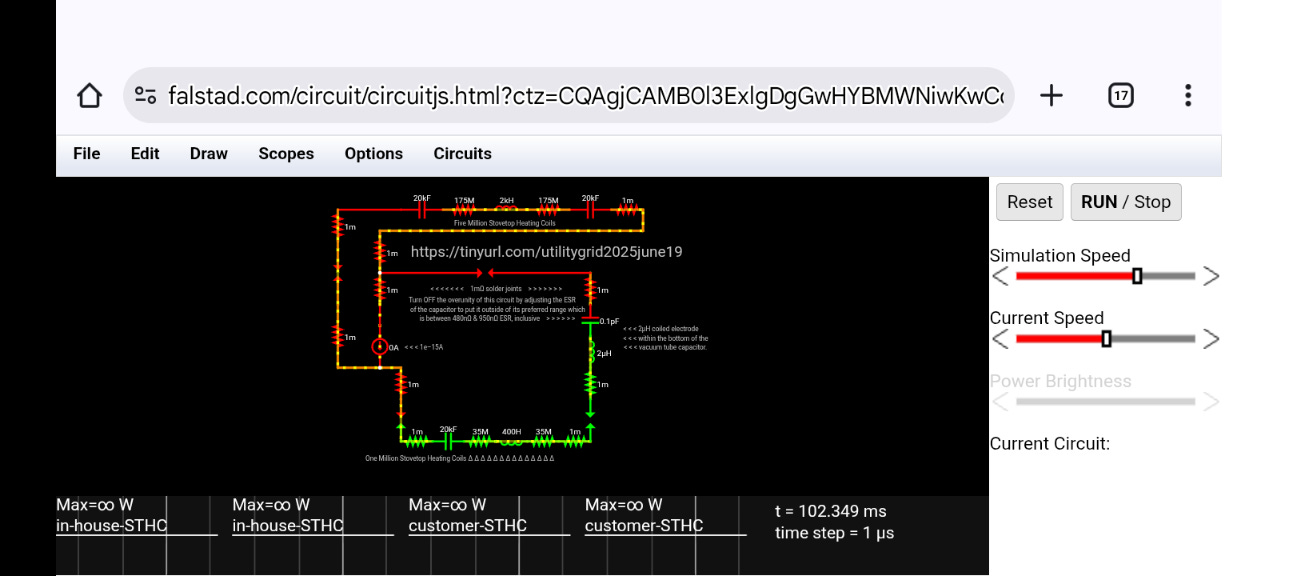I started out developing the following simulation with no clue that it would turn into an expression of the utility grid in which I had 1 million stove top heating coils in-house, namely inside of the electric power station.
I had a transmission line component, before I took it out, because it had too many weird requirements of it being grounded on both sides of its neutral line when the simulation took it beyond its acceptable level of tolerance.
On the far side of that transmission line, I had 5 million stove top heating coils.
But then I realized that I don't need the transmission line which made it possible for me to throw away all of the earth connections to ground.
The only energy source remains a constant current source of one femto ampere equivalent to 10 ^ -15 amperes of constant current.
Within a few milliseconds, the whole system rises to infinite gain producing no error messages and then stays there hovering at the simulator’s version of infinity (which is around 10 raised to the power of 300) producing an infinite amount of power both in-house and for the customer.
I was going to use the in-house stove top heating coils as an example of boiling water to run a steam turbine shackled to the axle of an electric generator to produce electric power. But then, once I put in the transmission line, I had to add more loads outside of the transmission line and so I added 5 million stove top heating coils.
So now, without the transmission line, this simulation possesses a total of 6 million stove top heating coils as its “load”. And the 1 million coils which are in-house, I don't know what to do with them except that they serve to be a curiosity. Why I left them in there, I'll never know.
I sprinkled four spark gaps in various places around the circuit and only two of them light up, because the other two don't even have any voltage (let alone amperage). Even though they show color, they don't really have any numeric value of energy – of any sort – within themselves.
These four spark gaps are very special in that they contain carbon powder to short out their interior and reduce their resistance to arcing to almost zero (but not quite zero) making it easy for them to turn on and arc.
Carbon powder is not the only method to make these spark gaps more efficient. It may be possible to make use of another design consideration described in the following podcast…
This simulation had its challenges because it wanted to blow up (on the one hand) or give me simulation error messages (on the other) before I succeeded in overcoming these challenges. But the one thing it did not give me a problem with was becoming comatose despite its meager input of current.
I must admit this was a very interesting circuit to develop.
https://tinyurl.com/utilitygrid2025june19
This post is a continuation of the three prior posts…
Spark gaps are disruptive even when they are not lit up.
Please see the previous article since I will be commenting on what I left out of that article in addition to bringing in a lot of other stuff to support my present commentary.
A Quicker Burn
https://tinyurl.com/quickerburn is a simple simulation of an overunity circuit which takes thousands of years to show any appreciable results. It’s called “quicker” since it’s faster than a https://t…








